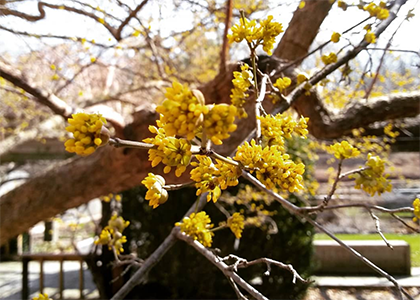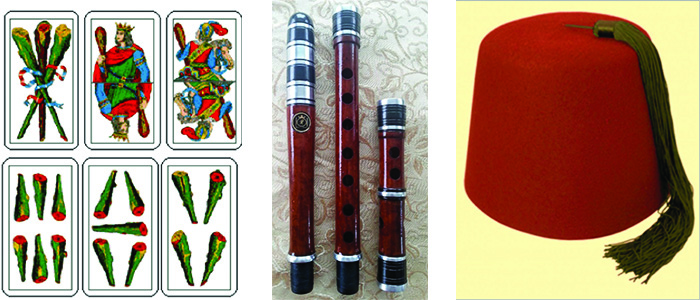
Botanical Name: Cornus mas
Family: Cornaceae or Dogwood Family
The cornelian cherry tree is a main attraction in our Groundcover Collection and is among the first plants to bloom in early spring. It is in full bloom now, so if you are able to visit in the next few days, you can enjoy its bright yellow blooms. In addition to the Groundcover Collection, you can find eight different varieties of Cornus mas, with names like ‘Pioneer’ and ‘Elegant’ in the Dogwood Collection and other areas in the Newman Arboretum.
This short article highlights some of the uses of the cornelian cherry around the globe.
The tart red fruits are high in Vitamin C and are quite astringent when not fully ripe. They can be used to make jams and sauces. Varieties have been bred with larger fruits and there are also some yellow-fruited types. In Turkey and Iran, the fruits are used to make a sweetened cold drink called kizilcik serbeti. In those areas, the fresh fruit is also sometimes eaten with salt or enjoyed dried.
Fruits are also used to make alcoholic beverages. One made in Germany is called dirndlbrand.
Cornelian cherry wood is extremely dense. It actually sinks in water. In ancient Greece it was used to construct spears, javelins and bows. In Italy, the stick, or bastone, carried by traditional herdsmen, the butteri, of the Maremma region of Tuscany is made of crognolo wood, as it is called in the dialect of that region.The bastoni are one suit in the Italian scopa playing cards (below left). While many decks show these clubs in a very stylized form, this rendition shows what could be the reddish-colored wood of the cornelian cherry.
Cornelian cherry wood has also long been used to make furniture, tool handles and musical instruments, like these Bulgarian flutes called kavals (below center).
The reddish-colored wood has also been used to dye traditional Turkish fez hats (below right).
